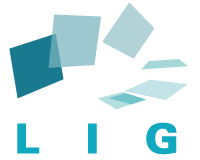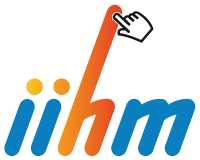Postdoctoral position: Transitions between interaction modalities in multi-surface environments
Post-Doctoral position in HCI:
Transitions between interaction modalities in multi-surface environments for visualising and manipulating 2D/3D representations
A post-doctoral position is available in the area of HCI and more specifically in the field of multi-surface environments. This work will be lead as part of a research project AP2 (http://ap2.immersion.fr/) that started in January 2016 and that involves the University Grenoble Alpes, the University of Toulouse and the Immersion company in Bordeaux.
The successful candidate will be requested to work in one of the two research lab involved in the project (Grenoble or Toulouse) and will be supervised by Laurence Nigay and Yann Laurillau (University Grenoble Alpes) as well as Emmanuel Dubois and Mathieu Raynal (University of Toulouse). One-week visits of the two other partners (including Immersion company) will happen on a regular basis.
Research study: The research study focuses on the design and evaluation of interaction techniques for interactive environments involving multiple interactive horizontal and vertical surfaces (e.g., an interactive table, a large screen on the wall, several tablets and smartphones). They are useful to (1) provide access to and (2) to support the manipulation of sets of data of different nature (2D/3D, pictures, text, values, etc.). As part of the project AP2, the two application domains are (1) the review of architectural design projects involving an architect and clients and (2) a general public setting to explore a university campus and its services.
Within such interactively rich environments, the research study will focus on transitions between interaction modalities. Concretely, when interacting with multi-surface environment for visualising, annotating, editing or moving representations of different natures (curves, texts, numbers, 3D models, maps, etc.) the user has to switch back and forth between input devices, tasks, data, and displays. User's activity thus appears as a fragmented sequence of interactive situations: interactive transitions are a means to accompany a change between interactive situations.
In this context, the design of an analytical notation or model is expected so that to support a systematic description of transitions in the interaction (e.g. properties, nature of the feedback). It will rely on a state of the art related to the transition in interactive environments and supports for their analysis.
Using such a notation, the second part of the work consists in designing and implementing interaction techniques in multi-surface environments for visualising and manipulating 2D/3D representations. Ultimately, experimental evaluations will have to be conducted in order to inform about the effect of the transitions properties on the user's activity.
Outcomes of the post-doctoral position will thus include
- An analytical notation to describe transitions between interaction modalities
- The design and implementation of interaction techniques in multi-surface environments based on the use the analytical notation
- Lesson learned about the impact of properties of a transition onto the user's activity.
Candidates should have a PhD in computer science, human-computer interaction or a closely related discipline. Candidates must have a strong interest in human-computer interaction; they must be creative to be able to generate original ideas; they are requested to have programming skills in HCI and with Android (if possible with knowledge of 3D graphics programming e.g. scene graphs, OpenGL, unity3D).
Contact: To apply, please send a complete CV, a statement detailing what parts of the subject are really motivating your application, and how you plan to organise your 18 months of work in the project. Please provide the names and contact information of referees by e-mail and send all these information by email to:
Emmanuel.Dubois@irit.fr, Yann.Laurillau@imag.fr, Laurence.Nigay@imag.fr, Mathieu.Raynal@irit.fr
Start date: November 2016. Duration: 18 months. Salary: 2917 € gross / month (~2300€ net / month)
References
1. Guillon, M., Leitner, F., Nigay, L. 2015. Investigating Visual Feedforward for Target Expansion Techniques. In Proceedings of the 33rd Annual ACM Conference on Human Factors in Computing Systems (CHI '15), ACM, 2015, 2777-2786. http://dx.doi.org/10.1145/2702123.2702375
2. Perelman, G., Serrano, M, Raynal, M., Picard, C., Derras, M., Dubois, E. 2015. The Roly-Poly Mouse: Designing a Rolling Input Device Unifying 2D and 3D Interaction. In Proceedings of the 33rd Annual ACM Conference on Human Factors in Computing Systems (CHI '15), ACM, 2015, 327-336. http://dx.doi.org/10.1145/2702123.2702244
This work will be conducted in the context of the contract AP2.

